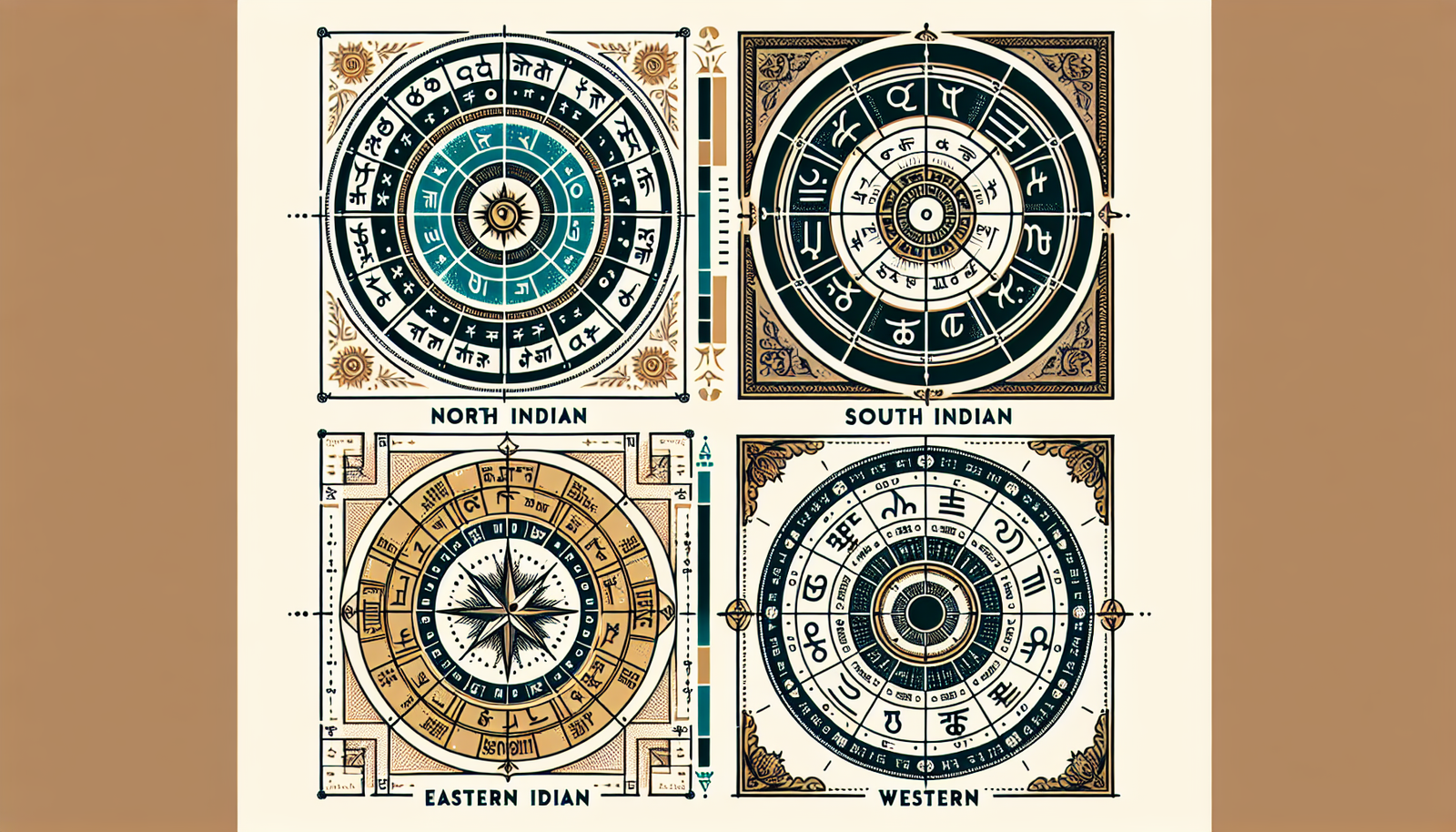Understanding Different Types of Horoscopic Charts: North Indian, South Indian, Eastern Indian, and Western Astrology
Astrology is a vast and intricate field that combines the celestial positions of planets and stars with human life events. One of the primary tools in astrology is the horoscopic chart, which serves as a map of where celestial bodies were positioned at a specific time—like the moment of your birth. Depending on cultural traditions, these charts can vary significantly. In this blog, we’ll explore the four main types of horoscopic charts: North Indian, South Indian, Eastern Indian, and Western. Each system has its unique features, applications, and interpretations. Let’s dive in!
The Significance of Horoscopic Charts
The horoscopic chart, often referred to as a natal chart or birth chart, plays a crucial role in astrological analysis. The information it holds can guide individuals in personal development, relationship dynamics, career choices, and much more. Understanding the different styles of horoscopic charts can help you find the right path to interpreting your life’s blueprint.
1. North Indian Horoscope Chart
The North Indian horoscopic chart, also known as the “Vedic” chart, is primarily used in Northern regions of India. This chart is known for its unique shape and interpretation which differ significantly from Western astrology.
- Shape: The North Indian chart is square-shaped and consists of twelve boxes arranged in a grid format.
- Signs & Houses: Each box represents a house and is filled with zodiac signs based on the positioning of planets. This format emphasizes the significance of the Nakshatras and the Moon’s position.
- Muhurta: A focus on auspicious timings is central in this chart type. It helps in determining the most favorable times for important life events.
In a North Indian chart, the planetary positions are interpreted based on their placement in houses, which signifies different aspects of life, such as wealth, career, and relationships. This style stresses the Moon’s position, making it fundamental in many predictions.
2. South Indian Horoscope Chart
Contrasting the North Indian style, the South Indian horoscope chart is also based on Vedic astrology. However, it has distinct features that set it apart.
- Shape: The South Indian chart is usually rectangular and consists of twelve segments representing the twelve zodiac signs.
- Fixed Signs: The chart does not change based on planetary movements; the signs remain fixed in position around the chart.
- Rahu and Ketu: This chart emphasizes the positions of Rahu and Ketu, which play a significant role in predicting life events.
The South Indian horoscope tends to emphasize the lagna (ascendant) and the spiritual path, providing insights into one’s character and life purpose. The importance of time and planetary transitions is instrumental in the predictive analysis in this context.
3. Eastern Indian Horoscope Chart
Eastern Indian astrology incorporates several traditional beliefs and practices from the region. While similar to Vedic astrology, it has unique interpretations.
- Combination of Systems: Eastern Indian astrology often integrates elements of both North and South Indian styles, making it adaptable and comprehensive.
- Focus on Nakshatras: A significant emphasis is placed on Nakshatras, or lunar mansions, which provide additional insights into personality and timing of events.
- Compatibility: This chart type often highlights compatibility for relationships based on Nakshatras, which serves as a guiding principle in marriage and partnerships.
In Eastern Indian astrology, interpretations may focus heavily on individual traits dictated by Nakshatras, influencing personal development and relationships in a culturally relevant context.
4. Western Horoscopic Chart
Western astrology, prominent in Europe and the Americas, employs a different approach to horoscopic charts, bringing its style and interpretation.
- Wheel Format: The Western chart is represented as a circular wheel divided into twelve sections, with planets placed within each section based on their alignment during the individual’s birth.
- Focus on Sun Sign: Western astrology often emphasizes the Sun sign which many people are familiar with. It reflects an individual’s core personality.
- Aspects: Relationships between planets, also known as aspects, are a crucial part of Western charts, influencing personal dynamics and predictions.
The Western horoscope provides insights into broader life themes while also addressing challenges and opportunities. The astrological symbols and their implications are interpreted to give a general picture of life’s journey.
Comparing the Different Horoscopic Charts
While the foundational principles of astrology remain the same across different cultures, each horoscopic chart presents unique characteristics and interpretations. Here’s a quick comparison:
| Aspect | North Indian | South Indian | Eastern Indian | Western |
|---|---|---|---|---|
| Shape | Square | Rectangular | Variable | Circular |
| Primary Focus | Moon’s position | Fixed Zodiac signs | Nakshatras | Sun sign & aspects |
| Approach | Career, wealth | Spiritual path | Compatibility | Personal growth |
Using Horoscopic Charts in Daily Life
Understanding your horoscopic chart can be empowering. Here are some practical ways to use this knowledge:
- Self-Awareness: Your chart can reveal patterns, traits, and tendencies that can help you understand your behavior and choices better.
- Decision Making: By determining auspicious times based on the chart, you can make more informed decisions about career moves or relationship commitments.
- Life Planning: Analyzing planetary cycles can guide you in planning events, from significant life changes to everyday schedules.
Each type of horoscopic chart offers unique insights and guidance. Whether you resonate more with the North Indian, South Indian, Eastern Indian, or Western approaches, understanding these differences can enrich your astrological journey.
Conclusion
In conclusion, exploring the various horoscopic charts provides a deeper understanding of how different cultures interpret astrology. Each chart comes with its own set of methods and focuses, enriching the overall astrological practice. Whether you are looking to dive deep into Vedic traditions or prefer the Western approach, there is a wealth of knowledge to be discovered. Take time to reflect on which style resonates with you most, and enjoy the insights your astrological chart has to offer!

